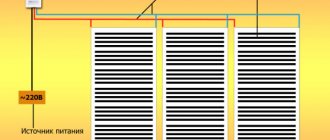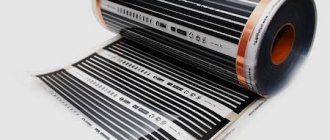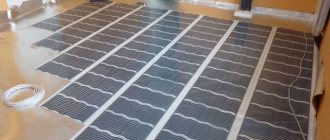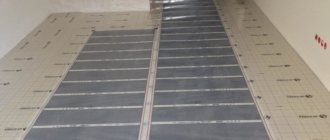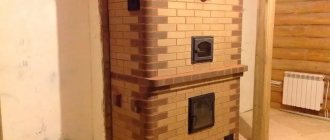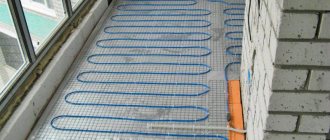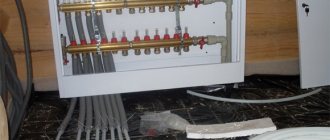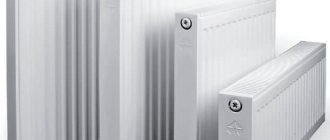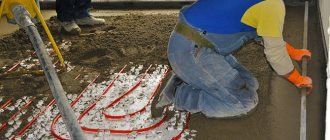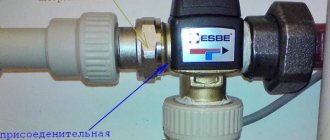Advanced technologies do not stand still; changes have also affected heating systems. Centralized heating is “not in fashion” nowadays, due to its low efficiency and cost for consumers.
Today, in order to keep your apartment warm, it is not necessary to install radiator radiators, which are not able to decorate the room, no matter how modern and aesthetic they may be.
To ensure the most comfortable temperature in the room, it is enough to install a water or electric heated floor, which will heat your house or apartment more efficiently than any centralized heating system.
To this list we can add one more type of heating, which appeared relatively recently, but has already become widespread - warm infrared floors. Such a system can be installed in rooms of any size and for various purposes - balconies, bathrooms, halls, bedrooms, etc.
Demand for infrared floors for apartments
First of all, everyone notes the main advantage - the ease of installation of such a coating. Installation is not very difficult, so many owners cope with it themselves or hire one specialist. Efforts like in a major overhaul, a team of workers, and a long period of time are not required.
For example, you can improve the climate in one room. Often this is a children's room. It is enough to carefully remove the floor covering, install the infrared heating system, and then simply fix the same finishing layer.
You can often find advertising articles and reviews in which managers cite the healing properties of an infrared ray as the main advantage: it disinfects the air and destroys germs. But this factor can hardly be called the main one, and such advertising does not inspire much confidence among consumers. It is difficult to give examples to make this effect of heated floors obvious.
Important point! Infrared coatings can be used as heated floors on steps and porches. The system copes excellently with ice, and it is not afraid of frosts and temperature fluctuations.
Advantages
Let us outline several advantages of infrared heated floors. Experts note: radiation is completely safe for health. It is capable of destroying bacteria in the room and heating the air quickly and evenly. The surface of the canvas consists of special strips, and the radiation is provided by power from electricity.
Important! The effectiveness of infrared floors is cited as a significant advantage. They guarantee comfort and a stable indoor microclimate. You can heat large floors, as well as local areas in the room. At the same time, the heat is felt as natural, which is created when heated by the sun.
Let us dwell on several advantages of infrared heated floors, which are most often noted by users and experts in their reviews.
- The film coating has a minimum thickness. In this way, it is possible to maintain the original height of the room. It is important that you don’t have to arrange a screed.
- Installation is quite simple and fast. The base surface does not require careful preparation. It is allowed to install heated floors when all major work has already been completed.
- According to the manufacturers, there are no problems with dismantling work either. When the need arises, you can remove it and lay it in another room, and also take it with you when moving for subsequent installation in a new place.
- Environmental safety plays a huge role. Infrared flooring can be installed in children's rooms. It does not emit harmful substances and does not cause reactions even in people with hypersensitivity. Moreover, radiation even brings real benefits, as it allows you to destroy bacteria and disinfect the air in the room.
- Heating is carried out evenly over the entire surface of the floor. As a result, an optimal microclimate is created in the room, comfortable for living and relaxing.
- It takes minimal time to warm up. After switching on, it will take just a few minutes.
It is important! Versatility has also become the main advantage of infrared warm floors. It is installed in premises for various purposes: in greenhouses and garages, in offices and cottages, in apartments and shopping complexes. It is permissible to use such systems under heavy loads on the floor covering, for example, in sports centers.
Interestingly, film heated floors are mounted on almost any surface, for example, on walls.
Almost any material can successfully act as a decorative finishing coating. There are no difficulties with laying laminate or linoleum.
Difficult moments, specifics
We should also dwell on some negative factors and consider the so-called pitfalls of such systems. Here are the key disadvantages:
- When the installation is carried out incorrectly, the installation and operation technology is violated, this can cause a fire in the heated floor.
- Difficulties in the functioning of the thermostat. The element is necessary to regulate the heat supply: using special sensors, the device determines when to start and stop the heat supply. But an emergency power outage or a drop in the network provokes malfunctions and breakdowns of thermostats. It is better to choose models with an independent power source.
- The floor cools down too quickly. During power outages, this factor becomes a serious problem. A good solution is to lay a heat-insulating layer between the base subfloor and the heating elements. This will keep you warm for a long time.
- Under flexible linoleum, the heated floor film is more susceptible to any mechanical stress and fails faster. A thicker layer should be placed between the topcoat and the infrared system. You can lay the linoleum itself in two layers.
- It must be remembered that the coating is still vulnerable. It is subject to mechanical damage, which must be taken into account during the installation process.
- The budget also needs to be calculated in advance. High-quality heated floors are currently quite expensive.
There are several useful recommendations: with them you can remove some risk factors and minimize the likelihood of damage to the warm coating.
Expert opinion
Yakovlev Alexey Sergeevich
Electrician with 20 years of experience and extensive experience
It is known that the film can be used together with linoleum. It covers about 70% of the floor area. Ultimately, the floor surface becomes a good additional source of heat: it not only gives comfort when walking barefoot, but also allows you to warm up the room well in the off-season, when central heating is not yet functioning.
But here you have to take into account the key point: the finishing coating must be of high quality. Otherwise, it will gradually begin to deform and lose its original shade and geometry.
Important! Another serious factor is the pressure on the surface of the heated floor. It cannot be laid in areas where large-sized furniture is planned to be installed. This rule applies to any infrared coating systems. Thus, the film will overheat due to excessive mechanical stress and fail. This is due not only to mechanical stress, but also to an insufficient level of heat transfer.
How does the IR room heating system work?
When creating a new type of heating, manufacturers were guided by the properties of a solar ray, which, reaching the ground, heats not the air, but all objects and bodies that come across along the way. The sun emits infrared rays, which are invisible to humans, but are perfectly captured by the cells of our body.
Remember how hot it can be in the snow-capped mountains when the sun is at its zenith. As soon as the sky becomes cloudy, thermal comfort disappears.
With a convective heating method, the highest heat points are located near the ceiling, with an infrared floor - in the human comfort zone
The main trump card in the infrared floor system is that when they are connected to electricity, heat rays of the infrared spectrum are released, due to which everything in the room should be warmed. The speed of such heating is much higher than from traditional water or electric systems, which first heat the air.
Initially, heaters were created - for home and outdoor use. Having seen that this technology really works, the innovative material began to be used in laying floors.
Operating principle of heated floors
Infrared flooring has become the best innovative solution of recent times. The system successfully heats the room, warming not only the floor, but also the air in the room. At the same time, the craftsmen ensured that the heating floor operates in such a way that it is identical to the radiation of solar heat.
There is a structure of the basic elements of a warm infrared floor, which is always the same, regardless of the size, brand, or specific model.
| Element | Functions |
| Foil | It is the main conductor of electricity in the heating system. The foil ensures uniform heating over the entire surface of the floor. |
| Heating element | With the help of this element, electrical energy is converted into thermal energy. |
| Separate heating elements | Placed in a durable film with increased resistance to high temperatures. They heat the coating. |
| Laminating film | Necessary for guaranteed insulation. Protects all working parts from the negative effects of moisture, and also protects them from mechanical damage. |
When electricity is supplied to the heating elements, the floor surface begins to heat up. Infrared film is the main source of heat; it also ensures uniform heat distribution over the finishing coating, for example, over laminate or linoleum.
Main settings
The characteristics of heating elements produced by three leading companies are combined into a table for clarity.
| Model | Thickness, mm | Power, W/sq. meter | Maximum heating temperature, °C | Warranty, years | Estimated service life, years |
| Caleo | |||||
| Silver 150 | 0,4 | 150 | 45 — 80 | 15 | 50 |
| Silver 220 | 220 | ||||
| Gold 170 | 170 | ||||
| Gold 230 | 230 | ||||
| Platinum 230 | 230 | 50 | |||
| Eastec | |||||
| Standard | 0,338 | 220 | 60 | 1 | 15 |
| Energy Save PTC | |||||
| RexVa | |||||
| Normal heat resistance | 0,338 | 220 | 110 | 25 | 25 |
| Increased heat resistance | 120 | ||||
The level of energy consumption of film heated floors depends on many factors. The possibility of energy savings of 30, 50 and even 60%, indicated on the official websites of manufacturers, in comparison with similar products of other brands remains in question. There are no data on comparative tests conducted by independent experts.
Types of infrared heated floors
Let's look at the types of heated floors with infrared radiation. Let's find out what the specifics of rod and film heating systems are.
Film floor
This type of warm coating is recognized as the most effective, easy to use and convenient for installation. The canvas consists of two layers, between which heating elements are located.
Film systems are produced in two formats: bimetallic and carbon. But at the moment, it is carbon coatings that are widely used on the market, since their heating efficiency is significantly higher when compared with the bimetallic alternative.
Let's look at several distinctive features of film heated floors.
- The material has a minimum thickness. This not only greatly simplifies installation, but also makes it possible to practically not reduce the height of the room when laying such a heating layer.
- The air does not dry out even with constant operation of the heaters.
- The system is quite reliable and safe. The risks of breakdowns are minimized due to the parallel connection of all elements.
- The film is highly durable and practically does not deform.
- To simplify installation, a special mesh made of microfiber is used.
Installation of film floors is simple and takes minimal time. The owners cope with it without any problems on their own. Removing the floor is also easy. This may be relevant when moving or changing the purpose of the room.
There are also disadvantages. The main factor is the relatively high cost, but high-quality material fully justifies the investment.
Important! Craftsmen advise including additional costs for drywall or fiberglass in the repair estimate: with such a basic base, laying a heated floor will be more reliable.
Rod floor
The rod-heated floor system is a set of mats, each of which contains heating elements in the form of rods. A step of 10 centimeters is maintained between them. The principle of operation here is generally no different from film floors.
Manufacturers provide a company guarantee for rod heating systems: the period is 10 years. Throughout this period, uninterrupted operation of the heated floor is ensured.
Here are a few specific characteristics of infrared rod floors.
- The material is perfectly compatible with a variety of adhesives.
- The floor copes well with negative mechanical influences and has an increased level of strength.
- Can be used with almost any type of finishing floor covering.
- No additional base substrate is required. The system already maintains its shape stability.
- There is protection against overheating. This ensures the safety of the top layer.
It is important! The connection here is parallel: all sections work independently of each other. This ensures the maximum level of security for the system as a whole.
Choosing the right one
Be sure to use the recommendations of experts to ensure that your heated floor lasts a long time and is easy to use. A few useful tips will help you choose the right infrared coating.
- A film that is already beginning to delaminate is not suitable for use. This is a sure sign of low quality.
- The material must be clean, free of debris, without foreign particles inside. There should also be no stains or any dirt. Be sure to unroll the roll and check.
- It is important to ensure uniformity: the printing of the carbon layer must be uniform.
- When purchasing, you will need to check the geometry of the material. A high-quality roll has straight edges and a smooth surface.
- The insulation of the wiring of a rod-heated floor plays a huge role: the safety of the entire system depends on it. Make sure the insulation is reliable and intact.
Important! It is necessary to distinguish materials by their types. Matte is optimal for a higher level of thermal insulation, while transparent is more suitable for successful gluing.
Installation of heated floors under laminate
It is possible to lay infrared floors with almost any finishing coating. But it is laminate that opens up maximum scope for interior design and is the most popular material. In addition, as practice shows, both types of infrared heated floors - rod and film - are successfully installed with laminate.
Let's take a closer look at all the key points.
Installation of material on the screed
Some people prefer to lay laminate flooring on a substrate to achieve the required level of thermal insulation and noise protection. But this reduces the efficiency of the infrared floor and makes it difficult to warm up the outer layer.
Without a substrate, sound insulation is sharply reduced, which is also considered a negative factor. The best solution is to install the material on a thin screed. A 3 mm substrate is sufficient, the thickness of which, after laying the laminate, will decrease under its pressure to 2.5 mm.
Which laminate installation option would you choose?
Laying laminate on a substrate without screed
100%
Laying laminate on a 3 mm substrate with a screed
0%
Voted: 2
Heating mats, film
Such installation on film or mats allows you to reduce work time and do without a special screed. The heating efficiency of the system will increase significantly. In this case, it will be necessary to additionally lay a protective polyethylene film with a thickness of 80 microns. It is necessary to prevent moisture from entering the heating elements.
Important! In those areas where furniture is planned to be placed, the heating system is not installed.
A noticeable advantage of this installation is that there is no need for capital work. You can use a substrate or an existing screed. When the laminate is already there, it is simply dismantled, the infrared layer is laid, and then everything is covered again with finishing panels.
Useful tips for better installation of heated floors with laminate
Laminate flooring has some disadvantages. The main negative factor is the presence of minimal gaps between the panels. In addition, such material is resistant to moisture. There are several important points when combining laminate and infrared flooring.
- To install the laminate, make sure the base is as level as possible.
- It is advisable to use only panels with a reliable locking connection. It is necessary to ensure the evenness and stability of the entire coating.
- A good solution is to pre-make a thin, strong screed.
Rules for laying infrared film
Remember a few more simple tips for high-quality installation of film flooring.
- The length of one strip can be a maximum of eight meters.
- Observe the step along the cutting line: it is 25 centimeters. Manufacturers do not recommend making cuts in the material in other places.
- The distance between warm floors and walls is maintained. It is at least 10 centimeters. The recommended maximum step is 40 cm.
- The distance between adjacent strips of material is at least 1 cm.
It is important! During the installation process, it is prohibited to connect the material in rolls to the power supply; you cannot walk on the unfolded film without insulation and finishing coating. It is strictly forbidden to cut or bend the heating cable.
When you are attracted to an infrared-type heated floor, it is important to understand how safe and effective it is, how long it will last, and whether the investment in such repairs is justified. Installation features, the specifics of each type of coating, and the subtleties of operation are also of great importance. Now, having answered all the key questions regarding a warm infrared floor, we can say with confidence: with such a coating the room will be comfortable and safe. The heating system is environmentally friendly, functional, and easy to dismantle and reinstall. With heated floors it is easy to create a pleasant atmosphere in a room.
Layout and cutting
Having made our choice, we proceed to planning and cutting. Heating elements must not:
- Place under fixed furniture - cabinets, tables, beds, etc. standing in one place, or large household appliances.
- Press against skirting boards and other fittings used for installing floor coverings. The distance to the walls should be at least 10 cm.
Failure to comply with these requirements causes overheating and burnout of the infrared film. You can cut the material into pieces only according to the markings applied by the manufacturer.
